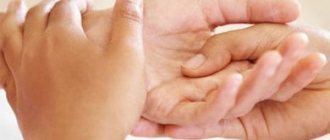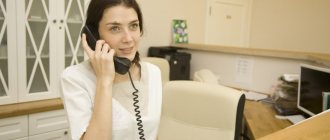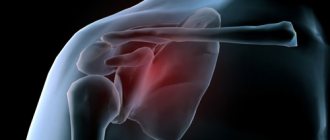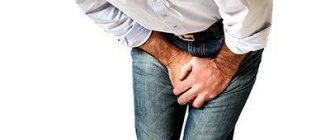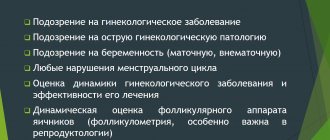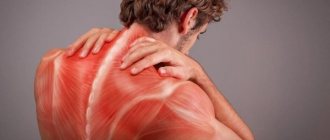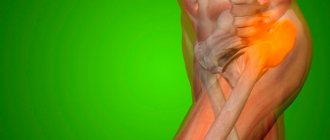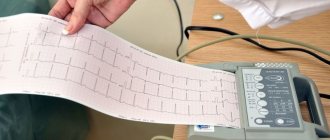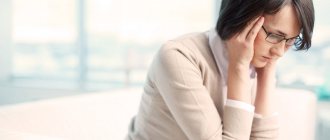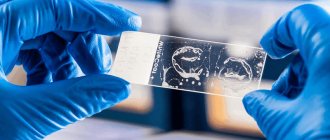Prices for services
Initial appointment with a proctologist (assessment of patient complaints, medical history, external examination of the anus, digital examination of the rectum, anoscopy if indicated)
Primary appointment – visiting a doctor of a specific specialty for the first time. Make an appointment
1500 ₽
Repeated appointment with the proctologist
Make an appointment
700 ₽
Severe itching and burning in the anus are characteristic of the following diseases and conditions:
- internal and external hemorrhoids, proctitis, paraproctitis;
- genital warts in the perianal region and rectal mucosa;
- acute and chronic anal fissure;
- fistula tracts in the anus;
- failure of the anal sphincter and involuntary contact of rectal contents with the skin of the perianal area;
- perianal dermatitis;
- inflammatory bowel diseases (ulcerative colitis, Crohn's disease, etc.);
- dermatological diseases (psoriasis, eczema);
Causes
A burning sensation in the back in the area of the shoulder blades is a sign of osteochondrosis, muscle strain or strain, pinched nerves, or herniated intervertebral discs. Since discomfort is the main clinical manifestation of the listed pathologies, the patient undergoes a thorough differential (comparative) diagnosis. Causes that cause osteochondrosis, pinched nerve, intervertebral hernia, muscle sprain or strain:
- Sedentary lifestyle.
- Previous back injuries (regardless of the statute of limitations of the injury and their type).
- Alcohol abuse.
- Long-term use of medications.
- Hormonal imbalance (the disorder can be determined through laboratory blood tests).
- Obesity.
- Chronic endocrine diseases.
- Constantly staying near a source of toxic exposure (for example, working in hazardous conditions).
Doctors have established a relationship between spinal diseases and a hereditary predisposition to their development. Problems with the musculoskeletal part of the back are caused by hypothermia, exhausting physical labor, and a monotonous type of professional activity (performing the same type of movements).
Disease of the muscles, spine and ribs occurs primarily (unaccompanied by other diseases) or secondary (against the background of the underlying pathology).
Primary and secondary anal itching
Anal itching can be primary or secondary. Secondary anal itching is a symptom of diseases such as anal fissure, hemorrhoids, helminthic infestations, anal sphincter insufficiency, proctosigmoiditis, intestinal disorders (constipation, diarrhea), genital inflammation, skin fungus in the sacrococcygeal region, exposure to allergens. Anal itching may indicate hidden diabetes. The causes of primary anal itching, which experts also call true, are not fully known.
How to distinguish heart pain from another
{banner_banstat10}
There are several effective criteria for distinguishing between types of pain.
- Cardiac discomfort does not depend on body position. He is stable.
- There is no connection with the depth of inspiration or time of day.
- Also, when palpating the sternum, the strength of the unpleasant sensation does not change in any way.
- The use of Nitroglycerin, on the contrary, reduces the intensity of discomfort. And this speaks in favor of the cardiac origin of pain. But analgesics and anti-inflammatory drugs have no effect.
These are reliable criteria, but they should not be taken as absolute truth. Situations are not alike; exceptions are always possible.
Advanced diagnostics under the supervision of a group of doctors puts an end to the issue. It is recommended to start under the supervision of a cardiologist.
Acute and chronic anal itching
There are acute and chronic primary anal itching, and the form of the disease is also its stage. Anal itching in acute form begins suddenly, has a constant course and strength, the skin in the areas of itching becomes moisturized, traces of scratching and an increase in perianal folds are observed. Chronic itching, on the contrary, is characterized by a slow onset, the skin of the perianal area is dry, thin, has altered pigmentation, scratch marks are absent or look like thin linear abrasions, skin folds are poorly defined.
Treatment
Help before diagnosis
To reduce burning sensation, a woman needs to carefully monitor the hygiene of her genitals and use special products for intimate areas. It is best to choose natural underwear that does not cause excessive sweating and does not press on the skin. For vaginitis, it is worth regularly changing sanitary pads, which will absorb discharge and reduce maceration of the skin around the vulva.
A burning sensation in the intimate area is often caused by the proliferation of pathogenic microbes. To destroy them, you can irrigate the external genitalia of women with a weak solution of chlorhexidine or chamomile decoction. It is not recommended to do vaginal douching without a gynecologist's prescription. It is impossible to effectively eliminate burning in the perineal area without etiotropic treatment, so the woman should consult a doctor.
Conservative therapy
For uncomplicated forms of the disease in women, local treatment is often sufficient. Therapeutic measures include the appointment of suppositories with antibacterial or antifungal action, which depends on the etiology of the pathogen. To eliminate discomfort, local baths with disinfectant solutions are recommended. Ointments with topical corticosteroids help relieve severe burning and itching.
For specific acute vaginitis, therapy is selected based on the sensitivity of the pathogen: gonorrheal infection is treated with penicillins, tetracyclines, chlamydial and mycoplasma - with macrolides, fluoroquinolones, trichomonas - with nitroimidazoles. For chronic candidal vaginitis, systemic antimycotics are effective. For the treatment of herpes in women, drugs from the acyclovir group are used.
Gynecological diseases are accompanied by vaginal dysbiosis, which increases burning and discomfort, so pathogenetic treatment is aimed at normalizing the microflora. Vaginal suppositories with lactobacilli, as well as oral combined probiotics, are effective. For chronic diseases, immunomodulators are recommended.
Itching and burning in the anus in women
Anal itching and burning in women, in addition to causes characteristic of both sexes, can be caused by gynecological diseases: candidiasis, vaginitis, hormonal disorders while taking combined oral contraceptives, menopausal changes, atrophy of the vaginal mucosa, inflammation of the glands of the vestibule of the vagina, etc.
The presence of the above symptoms in women is often a consequence of pregnancy and childbirth due to the occurrence of postpartum hemorrhoids and anal fissures; is further complicated by the fact that intestinal motility in the “weaker” sex is less pronounced than in men, as a result of which women more often suffer from constipation and irregular bowel movements.
Make an appointment
Pain in the lower abdomen is another symptom of osteochondrosis
Having gotten used to the fact that it is diseases of the stomach, intestines, etc. manifest themselves, causing pain in the abdominal cavity, most people turn to a doctor of the appropriate specialization. But tests do not always show the picture that doctors expect. Seeing that the condition of the internal organs is normal, specialists are perplexed. In such a situation, it is worth taking a closer look at the spine.
The connection between osteochondrosis and pain in the lower abdomen
Abdominal pain is a concomitant symptom of lumbar osteochondrosis, as well as thoracic osteochondrosis. This is due to the location in these sections of the nerve endings of the spinal cord, which connect the spine with the internal organs of the abdominal cavity and pelvis.
Over the course of many years, the intervertebral discs undergo destruction, resulting in a loss of strength and elasticity. As a result, excessive mobility of the vertebrae appears and bone growths form on the body, pathology appears in the joints, muscles and ligaments. Due to degeneration in the thoracic spine, in the area of 5-7 vertebrae, compression of the roots occurs, which are responsible for the nervous system of organs such as the intestines, gall bladder, spleen and stomach. Regular irritation of growing osteophytes is manifested by sensations similar to symptoms of gastrointestinal disease.
The mechanism of pain in the lower abdomen with lumbar osteochondrosis:
- Radicular - appears in the early and late stages, when a protrusion or lateral intervertebral hernia has formed. As a result of displacement of the altered discs, the roots of nerves and blood vessels are compressed, thereby contributing to the deterioration of the outflow of venous blood and the transmission of nerve impulses from the spinal cord to the brain. This leads to the appearance of a pain symptom in a certain area. If the first three roots are pinched, a person will feel discomfort in the lumbar region, in the inner and front thigh, in the groin area and lower abdomen.
- Lumboischialgia (sciatica) are symptoms that arise as a result of intervertebral pinching of the sciatic nerve. This syndrome will manifest itself in different ways. The pain is shooting in nature, radiating to the femoral or gluteal muscle. But at the same time, compression of the sciatic nerve causes spasm of the pelvic muscle, as a result of which the person feels pain in the groin and lower abdomen.
Nature of the pain symptom
In patients with osteochondrosis, in 15% of cases pain occurs, which is associated with the death of nerves in the tissues of the spine.
Pain:
- superficial or deep nature;
- aching, dull, bursting or cutting;
- constant;
- changes its character when changing position;
- manifests itself unilaterally, combined with lumbar or back pain.
During the destructive process in bone or cartilage tissue, pain is accompanied by symptoms of other diseases:
- heartburn, nausea or vomiting;
- feeling of heaviness in the hypochondrium;
- bowel disorders such as constipation or diarrhea;
- excessive gas formation in the intestines.
The most common clinical symptoms during osteochondrosis are pain in the lower abdomen, which are perceived as signs of appendicitis, colitis, cholecystitis or adnexitis.
First aid for lower abdominal pain
If a pain symptom appears in the lower abdomen, before the doctor arrives, the patient can do the following:
- Position: lying on your back, palm on your stomach. Then, with slow movements, we press the brush on the stomach, listening and remembering what the nature of the pain is. Where pain is felt more, press harder and release sharply.
- Position: standing, bend to the right and left, and then take steps forward and backward. We are trying to determine whether there is pain when moving.
- It is necessary to remember the cause of the pain, at what moment it appeared in the lower abdomen: due to stress, cooling the body, physical reload, or suddenly. It is worth noting here whether the pain was accompanied by symptoms such as nausea, fever or bowel dysfunction.
Vertebrogenic origin of pain syndrome
Pain in the lower abdomen manifests itself due to irritating effects on the nerve roots and can have various symptoms:
- lack of sensitivity, pale and dry skin;
- decreased tendon reflex;
- decreased superficial sensation;
- increased sweating;
- tingling sensation in the upper and lower extremities.
Vertebrogenic abdominal pain imitates various diseases of the abdominal and pelvic organs.
Diagnostic methods
To identify the causes of pain in the lower abdomen, it is necessary to conduct a number of examinations:
- Ultrasound examination is prescribed to confirm or refute pathologies.
- X-ray examination of the spine in two projections – lateral and direct. This helps assess the condition of each vertebra.
- Some of the informative methods for examining tissue are CT and MRI. They will help to view the ligamentous apparatus and identify the location of pinched roots.
The connection between pain syndrome and osteochondrosis can be confirmed if the following picture is visible in the test results:
- internal organs are in normal condition;
- reduced disk density;
- osteophytes on the spine;
- destroyed condition of cartilage;
- protrusion, intervertebral hernia;
- various curvatures of the spine.
Analyzes:
- General analysis of urine and blood, possibly an extended chart;
- Stool analysis with bacteriological culture;
- Endoscopic examination of internal organs, such as the stomach, intestines.
Based on a comprehensive examination, the doctor will draw a conclusion about the cause of the pain and choose the appropriate treatment method.
Author: K.M.N., Academician of the Russian Academy of Medical Sciences M.A. Bobyr
Diagnostics
The choice of diagnostic research methods depends on the nature of the disease and the presence of additional symptoms in the patient. Timely consultation with a coloproctologist to determine the cause of itching and burning and make a diagnosis - preventing possible complications. To diagnose itching and burning in the anus, various instrumental and laboratory research methods are used.
- Collecting complaints from the patient and compiling a medical history to clarify information about the nature of itching and burning, duration, intensity, relationship with eating disorders and other factors.
- External examination of the perianal area: assessment of signs of inflammation, the presence of scratches, abrasions, cracks, and any formations.
- Scraping material from the perineum for analysis of helminthiasis and helminthic infestation.
- Internal digital rectal examination.
- Anoscopy.
- If any symptoms from the gastrointestinal tract are detected: bacteriological analysis of stool, sigmoidoscopy, irrigoscopy, fibrocolonoscopy; for complaints of abnormal stool, abdominal pain - fibrogastroduodenoscopy and ultrasound of the abdominal cavity.
- In case of functional insufficiency of the anal sphincter, sphincteromanometry is performed.
When consulting a woman with complaints of itching and burning in the anus, a consultation with a gynecologist may be recommended to rule out diseases of the genitourinary system.
When a man comes to you with symptoms in the form of anal itching and burning, it is possible to consult a urologist and conduct a differential diagnosis.
Diagnosis of diseases with burning in the lumbar region
Symptoms in each specific case are studied very carefully, and only a doctor can determine what diagnostic methods will subsequently be used to identify health problems.
First, the expected area of violations is determined, after which a comprehensive examination with a focus on a specific profile is prescribed. In most cases, blood and urine tests are mandatory, and sometimes stool tests (if there is a suspicion of gastrointestinal diseases). Also, if problems with the musculoskeletal system and internal organs are suspected, ultrasound and x-rays are prescribed.
In case of heart problems, an electrocardiogram can be performed when the patient enters a medical facility or during an ambulance call, then the patient is under constant supervision of specialists. In case of injuries and skin rashes, a visual examination of the damaged area of the body is carried out, and additional types of examination may also be prescribed.
Treatment and prevention
The main direction of treatment for itching and burning in the anus is to find the cause and eliminate it.
- For infectious pathology: antibacterial, antiviral, or antifungal therapy.
- If helminthic infestation is detected, use antiparasitic drugs.
- For local treatment, painkillers, antipruritics, antiseptics, anti-inflammatory and antihistamines are used.
- In the presence of somatic pathology, treatment by a specialized specialist (gynecologist, urologist, gastroenterologist, endocrinologist).
- If the patient complains of sleep disturbances and psycho-emotional state, sedatives and hypnotics may be prescribed.
- In case of chronic constipation or diarrhea - treatment and regulation of stool.
- It is necessary to strictly adhere to the rules of intimate hygiene and wear underwear made from natural, breathable materials.
- Maintaining the principles of a healthy diet with the exception of spicy, sour, fatty foods, alcohol, carbonated drinks, seasonings.
- Elimination of prolonged mechanical friction and compression of the anus.
There are contraindications, consultation with a specialist is required!
Other articles by the author
- Treatment of internal hemorrhoids
- Hemorrhoidal thrombosis
- Seamless excision of anal fimbria using the Surgitron method
- Anococcygeus pain syndrome
- Condylomas
- Hemorrhoids
- Hemorrhoids: symptoms and treatment methods
- Hemorrhoids in women
- Itching and burning in the anus
First aid for burning in the back
A burning sensation in the lower back can occur at any time, so you need to know how to alleviate the condition of a person facing a similar problem. Before doctors arrive or contact specialized specialists, you can try to understand why your lower back is burning, but you still shouldn’t take drastic actions. To get started you need:
- Take the most comfortable position when pain is minimal and the back muscles are relaxed. One option is to straddle a chair and rest your chin on your arms crossed on the back. The fetal position also helps relieve pain. In any case, you need to choose the option that will be as comfortable as possible.
- You can take painkillers, which, of course, will not solve the problem, but will partially relieve the burning sensation and relieve acute pain.
- Sometimes, when the lower back pulls and burns, massage is an effective remedy. But there is no need to be zealous, since in case of problems with the musculoskeletal system, intense impact on the problem area can only worsen the situation. Light stroking and patting will be enough to relieve the burning and itching.
First aid in such a situation is aimed at alleviating the person’s condition to such an extent that he can independently get to a medical facility. If there is no improvement, the burning sensation and pain intensify, you should call an ambulance. You need to remember that you shouldn’t put off talking to your doctor until later, because you can’t figure out for sure why your lower back is burning on your own. The unpleasant itching may hide serious problems that sometimes require surgical intervention.
Consequences of ignoring a dangerous symptom
If the condition when it bakes in the stomach is not diagnosed and treated, the consequences can be the most unpredictable. Untreated gastritis and ulcers can lead to significant damage to the mucous membrane, including perforation of the stomach walls, gastric bleeding, and peritonitis.
In advanced cases, death cannot be ruled out. Constant irritation of the walls of the stomach by excessive release of hydrochloric acid and the reflux of bile into it can eventually lead to the development of an oncological process and the appearance of inoperable tumors.
Medicines
Baking in the stomach - a reason to visit a gastroenterologist
Since one of the main causes of burning in the epigastric region is the excessive secretion of hydrochloric acid, the main part of the drugs is intended to neutralize it. The prescription of drugs when the stomach bakes should be entrusted to a gastroenterologist, and not self-medicate. Most likely, he will prescribe medications from the following pharmaceutical groups:
- Antispasmodics that relieve pain from spasms of the muscular layer of the stomach (No-spa, Drotaverine hydrochloride, Papaverine).
- Antacid drugs to reduce the concentration of gastric juice (Maalox, Gaviscon, Gastal, Gastrozol, Panum, Relzer, Hydrotalcite, Almagel, Ranitidine, Altacid, Rennie).
- Alginates to create a protective shell on mucous membranes affected by hydrochloric acid (De-nol, Tribimol, Omez, Omeprazole).
- Enzymes that promote food digestion (Creon, Mezim, Pancreatin, Festal).
- Probiotics and prebiotics for violation of the ratio of beneficial and pathological microflora (Linex, Hilak Forte).
Additionally, it is recommended to drink alkaline mineral water according to the regimen determined by the doctor and take vitamin complexes.
